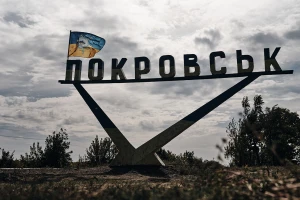
Collapse of Kakhovka HPP dam may cause further flooding in coming days – UK intelligence
Deterioration of Kakhovka HPP dam structure may cause additional flooding in the next few days
UK Defence Intelligence reported about that on Twitter
UK intelligence stated that the Kakhovka hydroelectric power plant (HPP) was partially destroyed at around 03:00 on 6 June 2023. The water swapped away the entire eastern part of the dam and much of the hydraulic and engineering infrastructure by 12:00.
UK intelligence also said that the water level in the Kakhovka reservoir was extremely high before the collapse, which led to the flooding of a particularly large area.
According to the UK intelligence, Zaporizhzhia Nuclear Power Plant, located 120 km from the dam, is unlikely to face immediate additional safety problems due to the drop in the water level in the reservoir.
"The dam’s structure is likely to deteriorate further over the next few days, causing additional flooding," the report said.
The blowing up of Kakhovka HPP
On Tuesday, 6 June, Russian occupation forces blew up the Kakhovka hydroelectric power plant, which completely destroyed it. Evacuation of residents of dangerous areas began, and the President of Ukraine convened an emergency meeting of the Security and Defenсe Council, while the world began to respond en masse to the tragedy. For a detailed summary of the events, click here.
In particular, Ukraine’s Cabinet of Ministers provided UAH 1.5 billion for the construction of two new water mains, which will help provide Kryvyi Rih, Nikopol and Marhanets with drinking water. Also, almost UAH 846 million was allocated to Kherson, Mykolaiv, Zaporizhzhia and Dnipropetrovsk oblasts to ensure the regions' drinking water needs.
A number of Ukrainian cities have declared their readiness to accept residents of the south.
Instead, Lieutenant General Serhiy Nayev, the commander of the Joint Forces of the Armed Forces of Ukraine, said that the occupiers' blowing up of the Kakhovka HPP will not harm the counteroffensive of the Armed Forces of Ukraine. And the Kyiv HPP is protected from air strikes and protected from Russian sabotage and intelligence groups.
At the same time, Ihor Syrota, General Director of Ukrhydroenergo, said that the peak of water spillage from the Kakhovka reservoir will be in the morning of 7 June. According to him, after that, the situation will begin to stabilise, and in 4-5 days the water level will begin to decrease.
The President of Ukraine held a meeting of the Staff of Supreme Commander-in-Chief, where they discussed the situation at the front line, the readiness for a counteroffensive and Russian’s blowing up of the Kakhovka HPP. He emphasised that the Russian Federation mined the HPP dam last year and Ukraine was ready for an explosion.
In addition, Volodymyr Zelenskyy discussed the consequences of blowing up the HPP and the risks for the Zaporizhzhia Nuclear Power Plant with the head of the IAEA and invited him to visit Ukraine.
The Ministry of Agrarian Policy and Food of Ukraine estimated that, according to preliminary calculations, as a result of the destruction of the Kakhovka HPP, approximately 10,000 hectares of agricultural land on the right bank will be flooded.
On the evening of 6 June, the UN Security Council met to discuss the situation that arose after Russian troops blew up the Kakhovka HPP dam. Serhiy Kyslytsia, Ukraine’s Permanent Representativeat the UN, said there that the Russians proved by blowing up the hydroelectric power plant that they can’t maintain the temporarily occupied territories. Instead, the Deputy Secretary-General of the UN emphasised that the detonation of the hydroelectric power plant will have far-reaching consequences for many thousands of people.
US President Joe Biden also reacted to the tragedy. He assured of support and assistance to Ukraine.
- News












































